His right hand subconsciously poised to lift a brush, promising an art world of creativity. He is a mysterious bearded figure, clad in a dark robe. He is Qi Baishi, a towering giant in traditional Chinese painting.
11:27
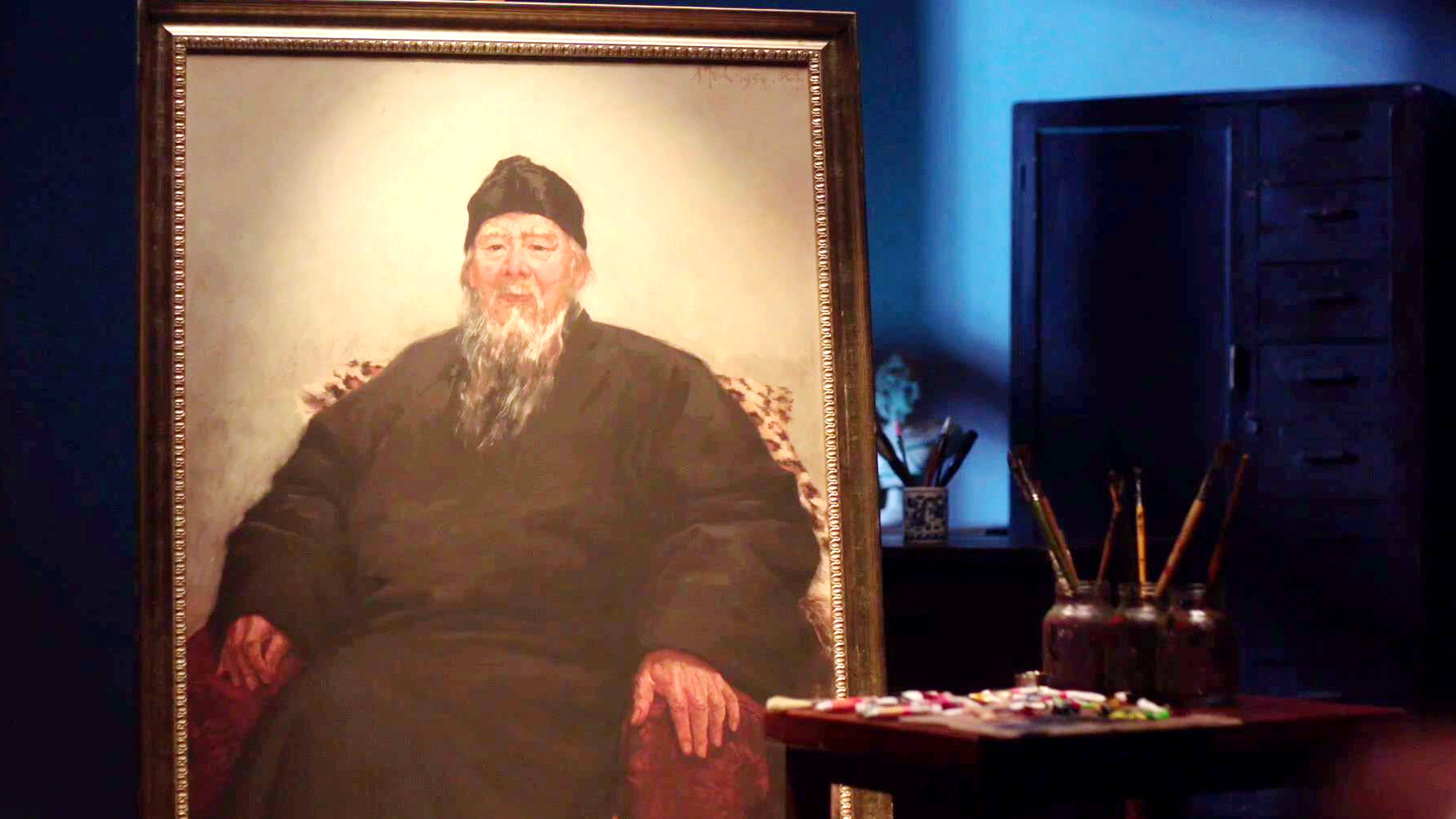
In 1954, Chinese oil painter Wu Zuoren composed this portrait of Qi Baishi. In the masterpiece, the artist imbued China's cultural spirit into the remarkable likeness of Qi. The artwork went on to become a classic of Chinese oil painting.
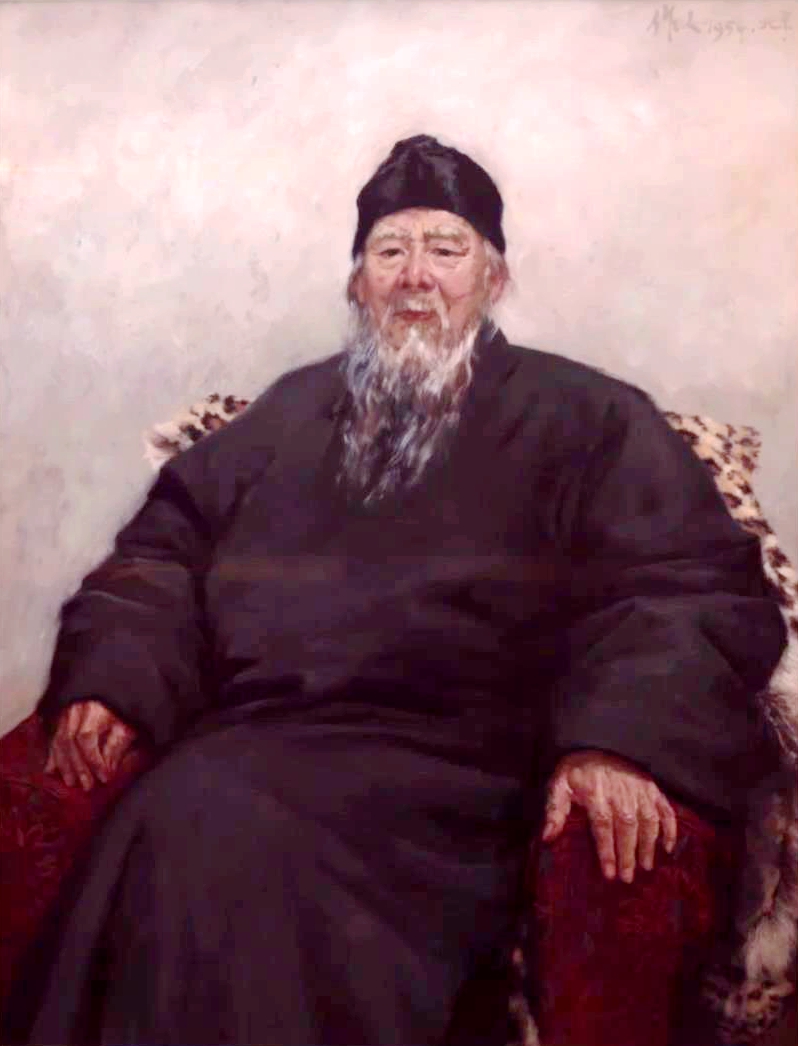
Painting "Portrait of Qi Baishi" by Wu Zuoren /CGTN
Painting "Portrait of Qi Baishi" by Wu Zuoren /CGTN
Wu had aimed to capture the "Chinese temperament" through his brush. In 1930, the 22-year-old painter went to Europe and studied oil painting at the Royal Academy in Brussels, where it was predicted that he would go far in the world of fine arts. Several years later, he came back to China and paid many visits to Qi Baishi. In Qi's studio in Beijing, Wu came to gain a better appreciation of the endless insights of China's fine art tradition. They discussed their painting and calligraphy endeavors. The brushstrokes of ink wash and oil encountered each other and inspired fresh possibilities. In observing how Qi realized his meticulous design imagery, Wu perceived an artistic spirit entirely unlike that of the painstaking oil medium.
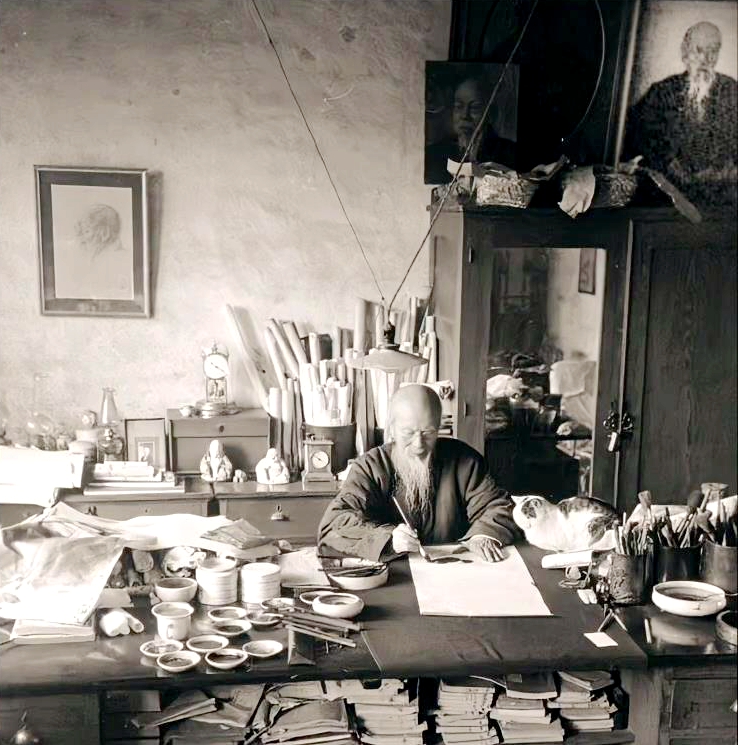
File photo of Qi Baishi's studio in Beijing /CGTN
File photo of Qi Baishi's studio in Beijing /CGTN
Wu Zuoren set out to capture the spirit of Qi Baishi and all his understanding of Chinese fine art in a single portrait. He then reviewed the whole tradition of portraiture as a fine art genre. He tried to understand the approaches of his predecessors and worked out a way to be different from them. Finally, the ancient art of Dunhuang offered him his inspiration.
In the 1940s, Wu began to turn his focus to China's traditional fine art. He twice travelled across western China and admired the still vivid brilliance of the murals and statues of the Mogao Grottoes in Dunhuang, northwest China's Gansu Province. After the journey, Wu picked up his brush and spent countless nights producing stacks of drafts. He asked his colleagues to merge the Western painting with traditional ink wash. Wu set a lofty goal for himself -- to paint a work that would add the Chinese temperament, as he called it, to the oil painting tradition.
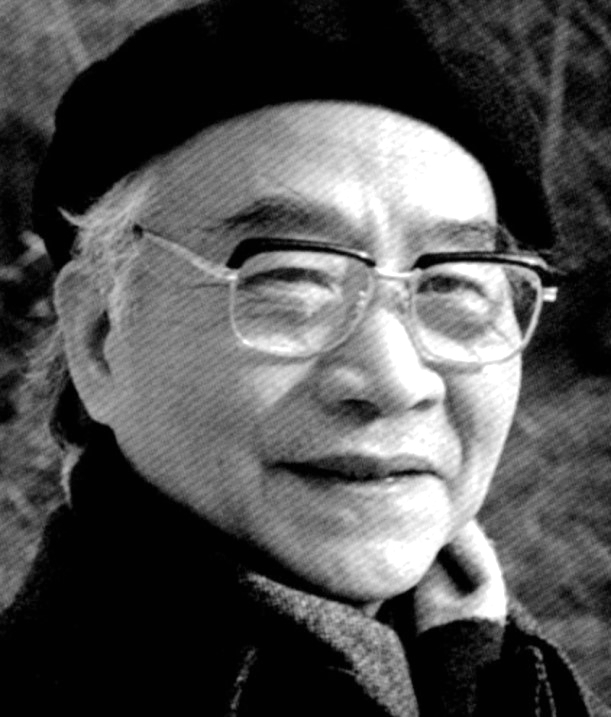
File photo of Chinese oil painter Wu Zuoren /CGTN
File photo of Chinese oil painter Wu Zuoren /CGTN
After years of immersion in traditional fine arts, Wu Zuoren considered himself ready.
One day in the early winter of 1954, Qi Baishi, nearly 91 years old by then, was invited to Wu's studio in Beijing. In the best-lit spot of the room, Wu had set a comfortable couch. The painting master settled himself snugly; he dozed off for a moment and his right hand made to lift an imaginary paintbrush. Wu captured this fleeting moment and developed it into a highly-detailed painting of the veteran artist.
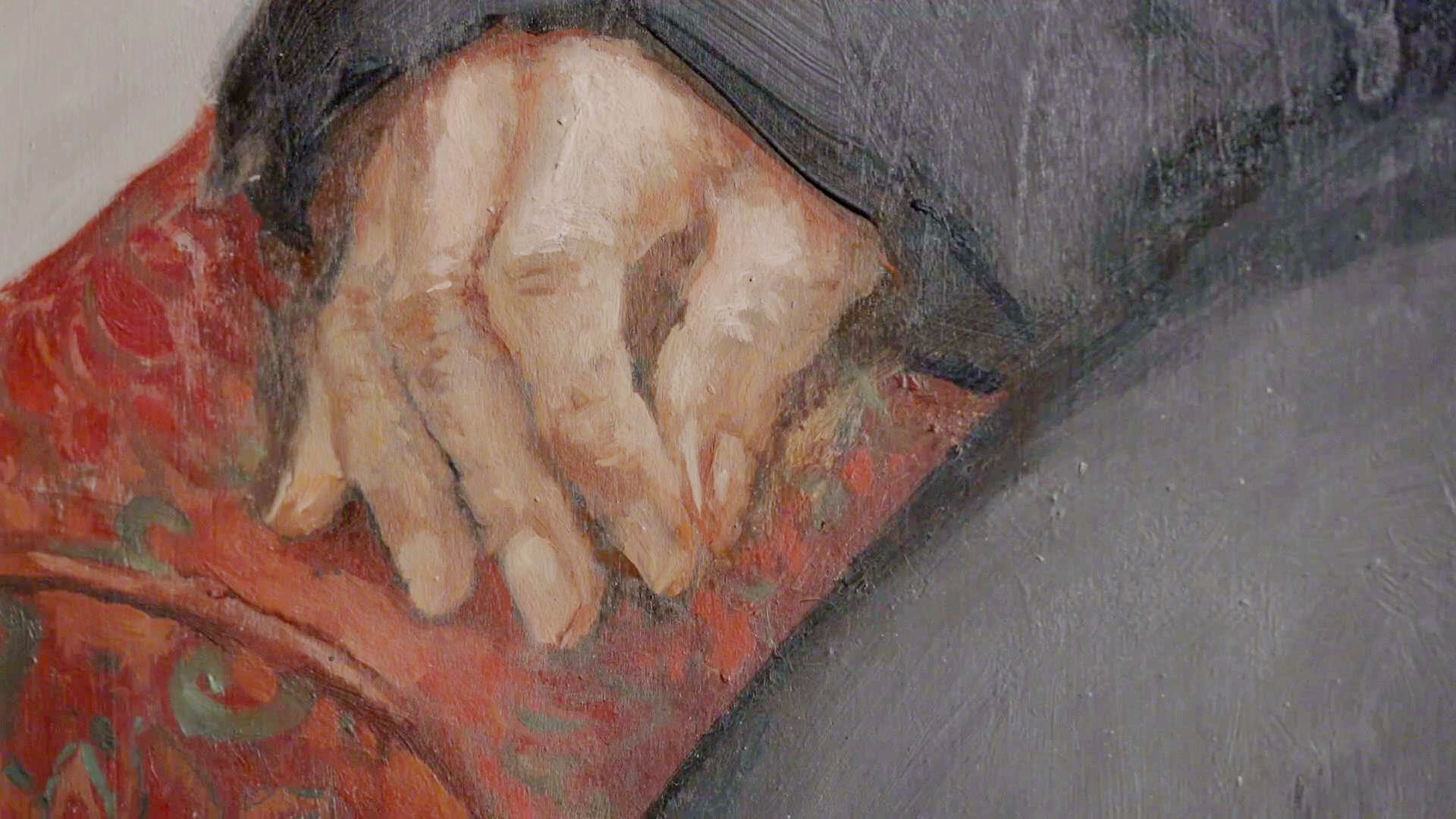
Details of the painting "Portrait of Qi Baishi" by Wu Zuoren /CGTN
Details of the painting "Portrait of Qi Baishi" by Wu Zuoren /CGTN
The art piece is considered to be a landmark in the history of China's modern fine arts. Wu Weishan, director of the National Art Museum of China, explains the piece's significance: "In recognizing and grasping this specific moment while creating the portrait, Wu Zuoren has brought Chinese oil portraiture to new levels. The image imbues form with spirit. Only the optimal blend of Chinese and Western culture can accentuate an artwork's enduring value."
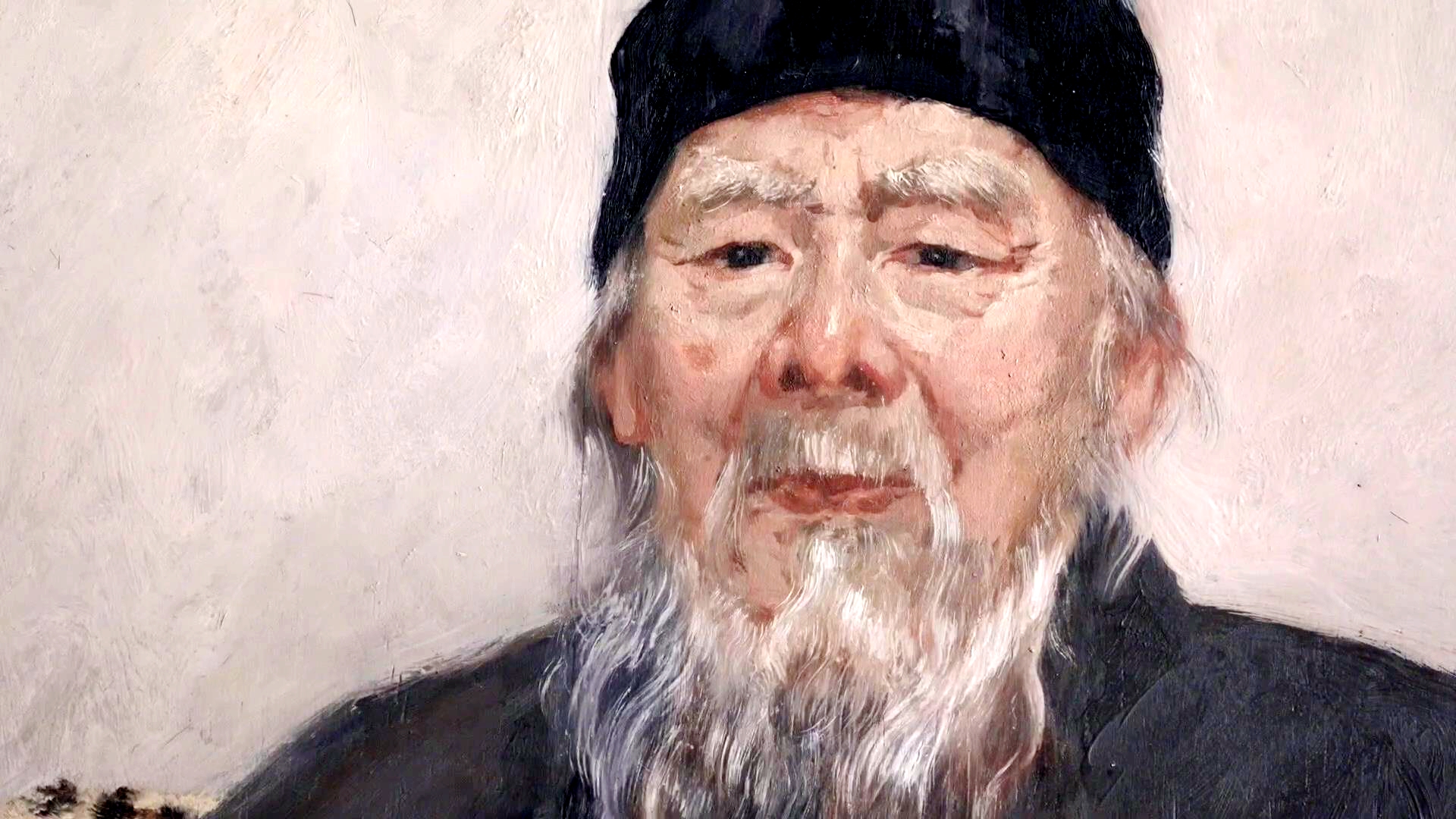
Details of the painting "Portrait of Qi Baishi" by Wu Zuoren /CGTN
Details of the painting "Portrait of Qi Baishi" by Wu Zuoren /CGTN
At the end of 1954, the painting "Portrait of Qi Baishi" was finished after two months' work. The essence of Qi's artistic career shimmers in the remarkable likeness. The deceptively simple composition and the figure's intense gaze all express a fascinating Chinese presence.
Accompanied by Wu Zuoren, Qi Baishi viewed the oil portrait of himself in 1955. And in the 1980s, Wu had his photograph taken with the portrait. Today, both the model and the painter are long gone. Only the painted figure on the canvas still sits quietly with his flowing beard. This figure is without a doubt the manifestation of China's cultural spirit in the oil medium.